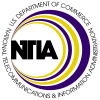Infrastructure Investment and Jobs Act
Biden-Harris Administration Awards $5.5 Million to Rhode Island in ‘Internet for All’ Planning Grants
The Department of Commerce’s National Telecommunications and Information Administration (NTIA) awards Rhode Island with its first “Internet for All” grants for deploying high-speed Internet networks and developing digital skills training programs under the Biden-Harris Administration’s Internet for All initiative.

Biden-Harris Administration Awards More Than $5.5 Million to Delaware in ‘Internet for All’ Planning Grants
The Department of Commerce’s National Telecommunications and Information Administration (NTIA) awards Delaware its first “Internet for All” grants for deploying high-speed Internet networks and developing digital skills training programs under the Biden-Harris Administration’s Internet for All initiative.

Biden-Harris Administration Awards More Than $5.7 Million to Iowa in ‘Internet for All’ Planning Grants
The Department of Commerce’s National Telecommunications and Information Administration (NTIA) awards Iowa with its first “Internet for All” grants for deploying high-speed Internet networks and developing digital skills training programs under the Biden-Harris Administration’s Internet for All initiative.

Biden-Harris Administration Awards More Than $6.4 Million to North Carolina in ‘Internet for All’ Planning Grants
The Department of Commerce’s National Telecommunications and Information Administration (NTIA) awards North Carolina with its first “Internet for All” grants for deploying high-speed Internet networks and developing digital skills training programs under the Biden-Harris Administration’s Internet for All initiative.

Biden-Harris Administration Awards More Than $6.4 Million to Georgia in ‘Internet for All’ Planning Grants
The Department of Commerce’s National Telecommunications and Information Administration (NTIA) awards Georgia its first “Internet for All” grants for deploying high-speed Internet networks and developing digital skills training programs under the Biden-Harris Administration’s Internet for All initiative.
$42.5 billion won’t be enough to close the US broadband gap
The Federal Communications Commission (FCC) released the first version of its new broadband map, marking a major step toward the distribution of $42.5 billion in funding for network expansions across the country. The maps are set to be used by the government to calculate which states will get the most money from the Broadband Equity, Access, and Deployment (BEAD) Program, with more funding going to those areas with the most unserved locations.
First look: Summary of the New FCC Broadband Maps
Overall, there are 112 million Broadband Serviceable Locations (BSLs) in the country (excluding territories). Of those, 7.15% of the BSLs are Unserved, which is 8 million. 5.2% of the BSLs are Underserved, or 5.8 million nationally. The Unserved and Underserved numbers provided are how I expect the calculation to be done for the BEAD program: it excludes LEO satellite service and also excludes service provided over unlicensed fixed wireless. It’s important to remember that the denominator in these calculations is BSLs, not housing units. BSLs include small businesses.
Infrastructure Investment and Jobs Act Anniversary: Reflecting on a Major Year of Progress
One year ago, I was standing on the South Lawn of the White House alongside a bipartisan group of lawmakers watching President Biden sign the Infrastructure Investment and Jobs Act (IIJA), infusing billions of dollars for an unprecedented national broadband deployment effort. We knew at the time it was a historic moment.
What Is the FCC’s New Broadband Map and Why Does it Matter?
The Federal Communications Commission released an updated map detailing broadband availability nationwide that will be used to allocate $42 billion in federal funds to states and territories to help expand access to affordable high-speed internet.

FCC Releases New National Broadband Maps
The Federal Communications Commission released a pre-production draft of its new National Broadband Map. The map will display specific location-level information about broadband services available throughout the country – a significant step forward from the census block level data previously collected. This release of the draft map kicks off the public challenge processes that will play a critical role in improving the accuracy of the map.

